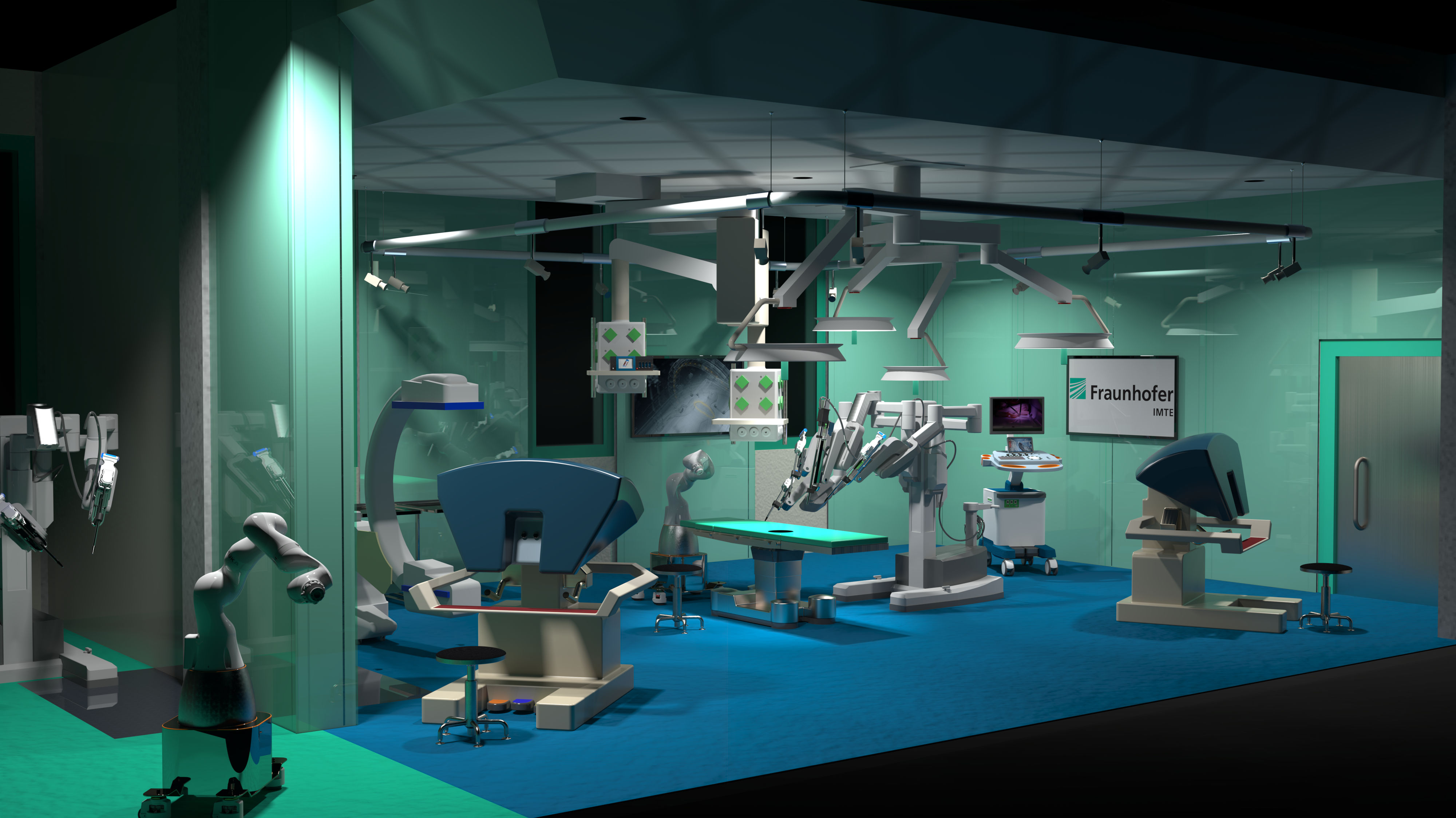Workspace

Trend-setting topics in medical technology are robot-assisted and (partially) automated surgical interventions with networked systems and fused information. Increasing automation and increased use of AI-based assistance systems are predicted for medical interventions. Furthermore, an operating theatre is already a high-tech place, but it is equipped with many isolated devices from different manufacturers. This creates technical and regulatory hurdles that make the networked collection, documentation and utilisation of all accruing information difficult. As a result, a great potential for improved individual patient care is currently being lost.
Within the framework of LIROS, a unique research centre for robot-assisted surgery is therefore being created at Fraunhofer IMTE with a realistic operating theatre environment, modern high-end equipment and individual anatomical patient models. The focus is on the optimisation and personalisation of training, the use of imaging techniques for intraoperative navigation, the networking of medical technology devices and the investigation of usability aspects to increase user-friendliness and safety in the operating theatre.
Research into these aspects offers the potential to perform surgical interventions with unprecedented flexibility and precision and, in combination with intelligent assistance systems, to increase the quality of interventions.